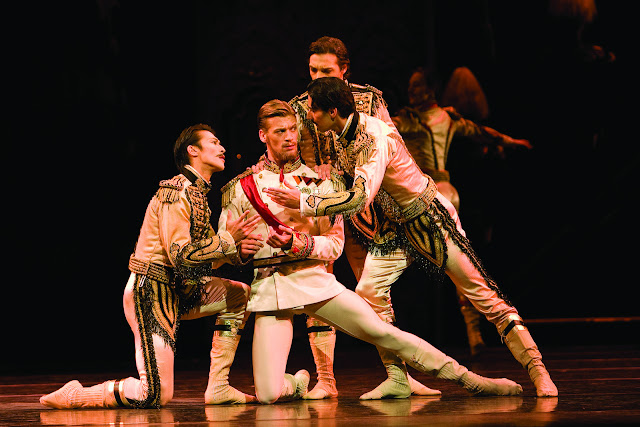The truth about the double death of Crown Prince Rudolf of Austria-Hungary and the 17-year-old Mary Vetsera has never been established because of an instant court cover-up. Rudolf's unhappy political marriage to Princess Stephanie of Belgium, his involvement with the Hungarian separatists' cause, and the oppressive opposition of his father, Emperor Franz Josef, undoubtedly motivated the desperate conclusion at Mayerling. Memoirs and letters reveal that Rudolf was a depraved and often violent prince, and Mary an obsessive girl only too ready to die for the idea of love.
Mayerling is everything but what you would stereotypically expect from a ballet: it is not sugar-coated, doesn't have a happy ending and the ballerinas are not wearing tutus. But maybe that is why I love it so much. Set in the late 1800s, it narrates the true story of the tragic deaths of two young supposedly lovers. I say supposedly because the facts are muddled with the lies that were told to cover the double suicide/murder.
Just before dawn on the 31st of January 1889, a carriage drew up in the rain at the monastery graveyard of Heiligenkreuz, four miles from the royal hunting lodge at Mayerling. On the back seat reclined a young woman in a fur coat and a hat. If the young woman seemed to hold her head high as she was lifted from the carriage, it was because a broom handle rammed between her clothes and her spine, supporting a splintered cranium. The carefully pinned hair, the angle o the fashionable hat, concealed the entrance wound of a bullet. Twenty-four hours earlier, Baroness Mary Vetsera had been murdered by her over, Crown Prince Rudolf of Austria-Hungary, before he shot himself.
The secret burial, the bulletins lying to the press that Rudolf had died of heart attack, the artful repair to his flesh with wax and paint, were orders of the Prime Minister to the Emperor Franz Josef. The cover-up was so complete that years later, when everyone concerned had died, the sack containing the prince's personal papers was unsealed and found to contain nothing but newspapers and pieces of linen.
As rumours spread at the time, the tragic double suicide was romanticized. From the first speculative revelations in print during the 1890s to the screen's several sentimental versions, elements were either not known or overlooked. Police records reveal that only weeks before he died with Mary, Rudolf had invited one of his mistresses, Mitzi Caspar, to commit suicide with him. She refused and reported him. Mary willingly accepted and kept the secret. She may have seen herself as Juliet, but Rufolf, by then 30 and suffering from venereal disease, was no Romeo. Not only love but political and personal pressures had made his life unbearable.
But who was Mary Vetsera, the reckless teenager who was ready to die for what she thought was love? For some time, Mary, then only 17, had been importuning the countess Marie Larich (Rufolf's ex-mistress) to be her emissary. It is widely reported that Mary had earlier sought an introduction to Rufolf at the Prater racecourse. An affaire in Egypt the previous year had given Mary a taste for passionate intrigue. Once she turned up at Rudolf's apartments at the Hofburg, a fur coat flung over her nightdress. She was reckless, impulsive, highly strung and dramatic, as much in love with love as she was to become in love with the idea of death. In her final letter to her sister, written at Mayerling, she proclaimed: "We are both going blissfully into the uncertain beyond. Think of me now and again, be happy and marry only for love. I could not do so, and as I could not resist love I am going with him"
With all this backdrop historical information, the ballet had plenty of sources to draw from to recreate the oppressive atmosphere of the court, the smoky taverns and the gloomy, rainy scene at the graveyard. The costumes were an ode to the period: every lady wore a full gown, complete with underskirts, petticoat, hat and jewels and not a single dress was the same. The detail was absolutely impressive and the luxurious fabrics used like velvet, brocade and embroidery emphasized the luxe and wealth which was present at court.
But above all the sets, costumes or anything else, what really touched me was the passionate, visceral and deadly dance the two lovers perform just before killing themselves. The tension between them was palpable and every kiss, every hug felt like it was the last one. But the choreography doesn't only reflect into their love affair but also translates the horrible fear of death and the unknown these two people have, especially Rudolf. It feels like they want to experience everything they possibly can together before exhaling their last breath.
XOXO
P.D The Royal Ballet's Mayerling is on until the 15th of June
P.D All historical information has been taken from the Royal Ballet's Mayerling Programme










No comments:
Post a Comment